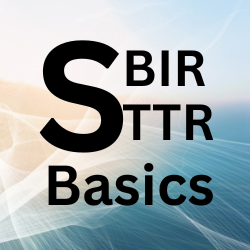Federal scrutiny of institutions like Harvard University has renewed focus on the government’s right to terminate funding agreements. Political pressure, public controversy, and alleged noncompliance, such as concerns about research conduct, research scope (including gain-of-function research), financial noncompliance (including misuse of funds), or civil rights violations (including anti-Semitism), have prompted agencies to review their oversight authority. Termination for cause or convenience gives the government a strong tool to act quickly. These long-standing clauses carry greater weight as recipients face a more charged and compliance-driven environment.
In U.S. federal government funding, termination clauses, particularly termination for cause and termination for convenience, play a role in shaping relationships between the government and its funding recipients. Agencies embed these clauses in agreements with various recipients, including universities, for-profit contractors, non-profits, and other entities that receive federal grants or cooperative agreements. Recipients must understand these clauses and the government’s ability to invoke them, ensuring compliance and managing risk effectively.
I. Definitions and Context
Termination for Cause
Termination for cause (“termination for default”) occurs when the recipient fails to fulfill their obligations under the funding agreement. Triggers may include:
- Failure to make adequate progress toward project goals.
- Misuse of federal funds.
- Noncompliance with applicable laws, regulations, or terms and conditions of the award.
This termination form is generally punitive and invoked due to a breach or failure attributable to the recipient.
Termination for Convenience
Termination for convenience allows the government to end the agreement without the recipient being at fault. The government may choose to terminate an award at its discretion. The underlying reasons may include:
- Budgetary constraints.
- Changes in policy or program priorities.
- Redirection of resources.
While this may seem harsh, the principle behind it is to provide the government flexibility to act in the public’s best interest, especially in dynamic political or economic environments.
II. Regulatory Framework
A mixture of statutes, regulations, and agency-specific policies governs government funding agreements. Key authorities include:
- Uniform Guidance (2 CFR Part 200) – Governs federal awards to non-federal entities such as universities, non-profits, and state and local governments.
- Federal Acquisition Regulation (FAR) – Applies to contracts with for-profit entities.
- Agency-specific terms – For example, NIH, NSF, or DoD may include their supplemental clauses.
Under 2 CFR § 200.340, the federal awarding agency or pass-through entity may terminate a federal award:
- For cause.
- With the consent of the non-federal entity (mutual agreement).
- For the convenience of the recipient (with notice).
- For the convenience of the federal agency (unilateral).
III. Termination Clause Implementation Across Recipient Types
A. Universities and Non-profits
Universities typically receive federal grants or cooperative agreements under the Uniform Guidance. Termination clauses here are standardized and usually included in the terms of the award. Implementation includes:
- Notice and Opportunity to Cure: Before termination for cause, recipients receive written notice and an opportunity to correct deficiencies.
- Final Reporting: Upon termination (whether for cause or convenience), the university must submit final reports (financial, performance, and property).
- Allowable Costs: Costs incurred up to the termination date that are otherwise allowable are usually reimbursable.
B. For-Profit Organizations
For-profits usually contract with the government under the FAR, which provides distinct and detailed rules on termination:
- FAR Part 49 governs termination for convenience.
- FAR Clause 52.249-2 is a standard provision in many contracts and outlines the contractor’s obligations upon termination.
- Contractors may be entitled to equitable adjustments for work performed before termination for convenience.
- For cause or default, the contractor may be liable for excess costs incurred by the government to reprocure the work.
C. Other Recipients (State Governments, International NGOs, etc.)
Depending on their nature, other recipients fall under either Uniform Guidance or agency-specific policies. Termination procedures are similar but may be subject to additional statutory oversight, particularly in the case of state and local governments.
IV. Legal and Practical Considerations
- Documentation is critical: Cause terminations require well-documented evidence of noncompliance or underperformance.
- Dispute resolution: Recipients may appeal a termination decision, either through administrative channels (e.g., the Civilian Board of Contract Appeals) or in federal court, depending on the type of agreement.
- Impact on future funding: Termination for cause may affect a recipient’s eligibility for future awards, as it can influence federal responsibility determinations.
V. Best Practices for Recipients
- Understand your agreement: Know whether you’re operating under a contract, grant, or cooperative agreement, and which regulations apply.
- Maintain compliance and communication: Early engagement with the funding agency when problems arise can help avoid termination.
- Prepare for contingencies: Establish internal protocols for closeout procedures in case of termination.
- Document everything: Accurate and timely documentation of performance and expenditures can provide essential protection.
Conclusion
Termination clauses in government funding agreements are fundamental risk management tools that protect federal interests while providing mechanisms to ensure accountability and transparency. Whether operating in academia, industry, or non-profit sectors, recipients must understand these provisions and implement robust compliance and response strategies. Proactive awareness of the potential for termination, whether for cause or convenience, can help organizations safeguard funding and maintain positive relationships with government agencies.


